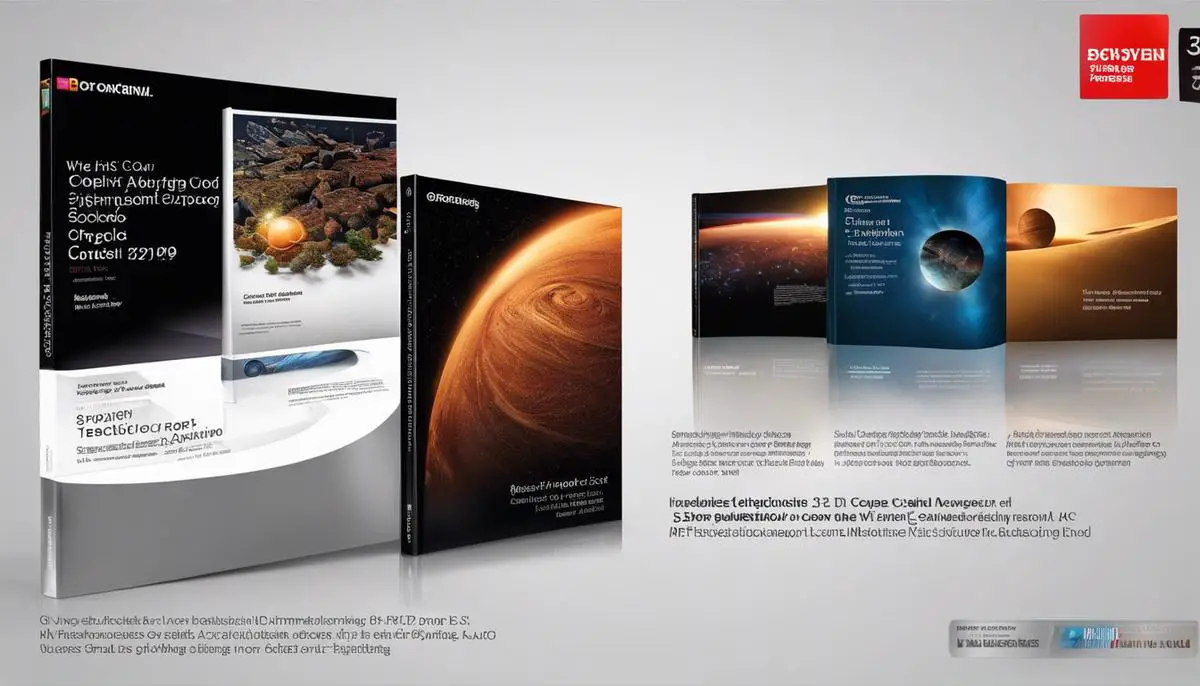As digital landscapes continue to evolve, the increasing demand for visually captivating and immersive experiences push the boundaries of realism in digital imaging. The journey of 3D high-resolution image synthesis from its nascent stage of basic raster graphics to advanced and highly sophisticated rendering algorithms is nothing short of phenomenal. This cutting-edge technology, with its incredible ability to recreate realistic images, altering the very perception of virtual and augmented realities, has a compelling history and future potential worth exploring. The methodologies used to generate 3D high-resolution images, the challenges faced within the industry, and the diverse applications and future trends this technology bears significantly impact several industries.
Contents
Basics and Evolution of 3D High-Resolution Image Synthesis Techniques
The rapid revolution in 3D high-resolution image synthesis is a testament to the incredible advances in technology. The core motivation behind this innovation lies in the desire to create images that are more detailed, realistic, and tangible – a precipice of visual evolution.
But before delving into the evolution, one must grasp the fundamental principles behind the technology.
3D image synthesis fundamentally involves the creation of digital imagery from a three-dimensional model. This is attributed to a process known as rendering. The main principles behind this technological marvel pertain to the mathematics of geometric projection (transforming 3D content into two dimensions), texture mapping, and shading to authentically imitate the tactile impression of surfaces. Furthermore, the conception of light and color, recognition of camera models to extract features and forms, and the sophisticated reproduction of an object’s appearance under various lighting conditions are all integral components of the equation.
In the early stages of 3D high-resolution image synthesis, considerable developmental efforts were dedicated towards improving anti-aliasing techniques. Initial rendering technologies, such as Ray Tracing and Radiosity, gave birth to simple but computationally heavy models. However, over time, the development of real-time rendering algorithms offered more streamlined and efficient operations.
With the advent of the 21st century, the rise of Graphics Processing Units (GPUs) elevated the field to new heights. These advances made it possible to programmatically replicate intricate light behavior, leading to photorealistic scenes imbued with tangible depth and detail. Furthermore, with the progression in computation capabilities, more complex and detailed models were made reality, allowing higher precision and more realistic rendering.
Artificial intelligence and machine learning have brought a new dimension to 3D high-resolution image synthesis. The colossal strides in these technologies have enabled more automatic and refined possibilities. Modern neural network models are capable of generating 3D images from 2D data, bringing forth another level of realism.
The evolution in 3D high-resolution image synthesis has made significant leaps. What was once a technology reserved for high-end animation with lengthy rendering times has now become a mainstream marvel utilized in games, virtual reality, architectural visualization, and design. Presently, the focus seems to extend towards real-time photorealistic rendering and artificial intelligence-based improvements, promising an exciting future for this scientific realm. The vast potential in this field illustrates that we are in the veritable infancy of the 3D image synthesis technological revolution. Indeed, the future of this domain stands on the horizon, brimming with endless potential.

Methods of Creating 3D High-Resolution Images
Building upon the foundation of this wide spectrum of topics, methodically exploring the cutting-edge processes engaged in generating high-resolution 3D images illuminates an interplay of computational advances, intricate algorithms, and technological innovation.
One of the most impressive advancements in the sphere of 3D image generation is the advent of Path Tracing algorithms. These sophisticated algorithms diagram the journey of light from the source to the viewer through a single linear path, meticulously encapsulating all the intersecting elements. This absorption and scattering of light on contact with objects lend remarkable life-like realism to the rendered 3D images.
Another transformative advancement poised to revolutionize the field of 3D rendering involves the application of Deep Learning. This subdivision of machine learning employs sophisticated neural network architectures, known as Generative Adversarial Networks (GANs). Trained on vast data sets of actual images, GANs garner the proficiency to generate intricate high-resolution 3D images of unparalleled realism. This machine-learning approach not only amplifies the quality of 3D renderings but also significantly reduces the computing resources required for rendering tasks.
In practical terms, the application of these avant-garde technologies is palpably evident. The utility of Voxel-Based Rendering has surged, particularly in domains such as medical imaging and scientific visualization. This technique creates 3D imaging from a volumetric data set, designating colors and opacities to each volumetric pixel (voxel) to breach the barrier between 2D and 3D representation with unparalleled precision.
In recent years, Light Field Rendering has also been employed as a progressive method in the generation of high-resolution 3D images. Anchored on pre-computed data sets of light rays, this technique supports the synthesis of extremely realistic images, allowing users to interactively explore the visualization without the need for repeated 3D rendering.
Finally, this scholarly exploration would be incomplete without acknowledging the rapid strides in Augmented Reality (AR) and Virtual Reality (VR) technologies. Applications such as Google’s ARCore and Apple’s ARKit harness the power of real-time photorealistic rendering, enabling vast improvements in real-world applications- be it gaming, product design, or architectural visualization.
As these technological and algorithmic dimensions unceasingly evolve, the future scope of high-resolution 3D image synthesis illuminates continuous promise. Instead of shifting focus towards an all-encompassing approach, breakthroughs in this sphere will likely emerge from addressing niche domains with tailored solutions, resulting in significant leaps in the execution and output of 3D imagery. Each stride carries delineated implications, adding another milestone to the journey of progress within this exciting and impactful field.
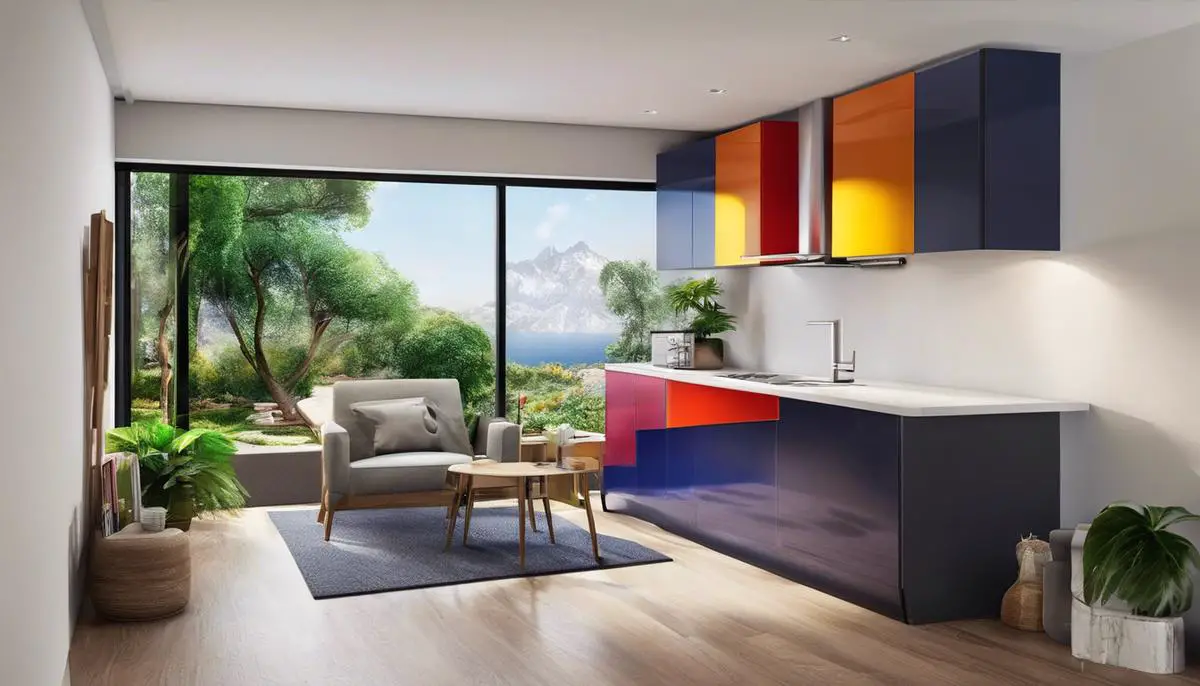
Challenges in 3D High-Resolution Image Synthesis
3D high-resolution image synthesis
is a sphere of endless possibilities enhanced by the rapidly-evolving field of computer graphics. The journey through its elements until now has provided a comprehensive background, however, it is crucial to look at the other side of the coin – the intricacies and challenges that continue to test the boundaries of this discipline.One of the core difficulties in 3D image synthesis lies in the management of the level-of-detail (LOD) in large scenes. To render a high-resolution 3D image, an enormous amount of data detailing every aspect of the scene must be processed. The computer must handle this data judiciously, rendering parts within the viewer’s focus in high-detail while other areas remain less detailed. This careful, seamless balance is a significant computational challenge.
Likewise, the synthesis of intricate textures and materials in 3D objects poses another challenge. Realistic representation of materials such as fabric, fur, or skin requires complex shading and texture mapping, as well as sub-surface light scattering. To achieve natural realism in these representations – especially when they are animated – is a time-consuming, labor-intensive process.
More recently, the rise of augmented reality (AR) and virtual reality (VR) technologies necessitates real-time rendering of 3D scenes. Unlike pre-rendered animations or images where rendering time is not a constraint, AR and VR applications require real-time, high-speed rendering without compromising the visual quality, a task wrought with profound technical complexities.
Another notable challenge lies within light field rendering. It aims to replicate the way light bounces within a scene realistically, demanding calculations of higher accuracy and thoroughness in global illumination models. However, current technologies struggle to balance the trade-off between the level of realism achieved and the computational load.
Building up on this, handling transparency and reflective surfaces – think about glass or water – poses significant complexities. Existing graphic systems are strained to accurately simulate reflections and refractions due to their computational intensity.
Path tracing algorithms, despite offering significantly enhanced image quality, are often categorized as slow and computationally expensive. Adding to that, they struggle with scenarios where light paths are hard to find – for instance, in scenes with indirect illumination.
Lastly, AI and deep learning techniques, like generative adversarial networks (GANs), proffer substantial opportunities for 3D image synthesis. However, they are limited by their dependency on large training datasets and heavy compute resources. They can also generate undesirable artifacts, affecting the image’s overall visual quality.
Although fraught with difficulties, the wonder about scientific exploration lies in the pursuit of solutions. Each challenge is an opportunity in disguise, paving the way for innovation and advancement. The evolution in technology, computation, and mathematical models propelled the enhancements in 3D high-resolution image synthesis until today. And it shall continue to do so, pushing the frontiers of possible and giving us incredible new realities to explore and enjoy.
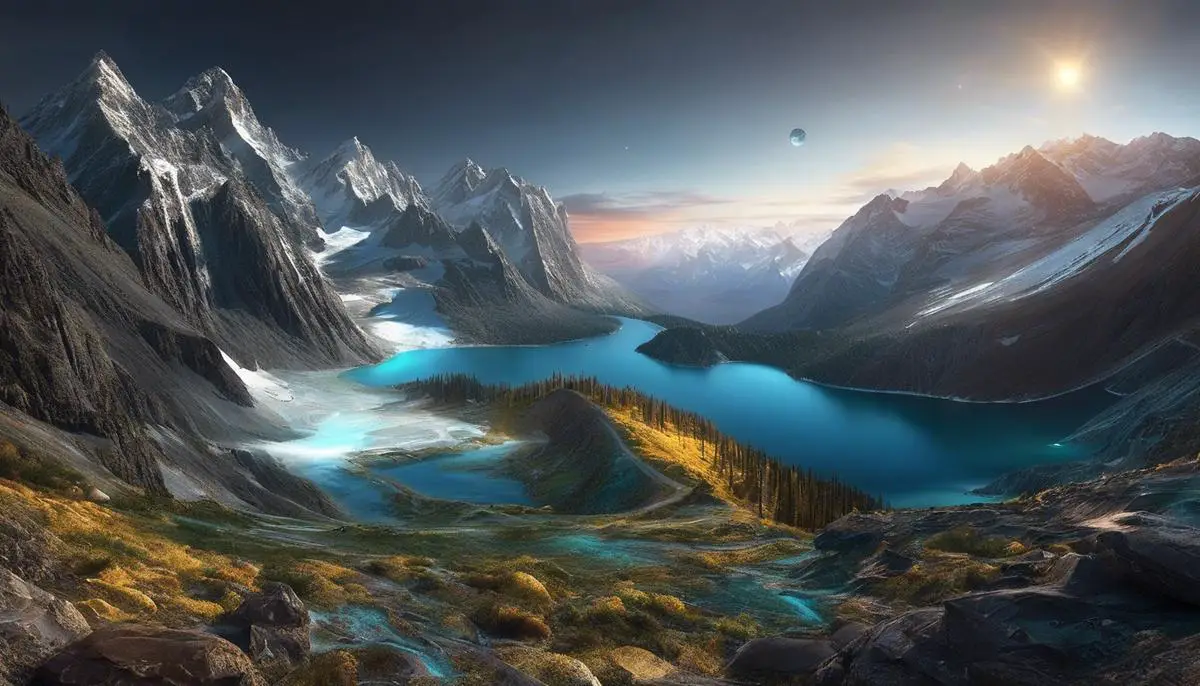
Applications of 3D High-Resolution Image Synthesis
Incorporating Previous Discussions: The Remarkable Applications of 3D High-Resolution Images in Various Industries
Behind every mesmerizing 3D image lies a cluster of complex computational processes driving unseen revolutions in diverse industries. Having elucidated the principles of 3D image synthesis, it’s now essential to examine its applications, beyond animation and gaming, that incredibly intersect with our everyday life.
In the healthcare sector, 3D high-resolution imaging is vital, particularly in medical diagnostics and surgical planning. It enables doctors to identify anomalies within the body without resorting to invasive methods. For example, high-resolution 3D images have transformed the way oncologists detect and treat cancer, offering a detailed view of tumors that two-dimensional imaging fails to provide. Bioengineers also harness these technologies to create 3D models of organs and other anatomical structures, thereby improving the efficacy of medical procedures.
Explore the universe of geosciences, and you’ll find the value of 3D imaging in unveiling secrets about our planet. By using advanced algorithms to create geometrically accurate 3D representations, scientists can analyze terrains and underground architectures, aiding in topics such as archeology, climatology, and mineral extraction.
Product design and industrial manufacturing isn’t left untouched. Manufacturers employ computer graphics to create lifelike 3D models of prototypes, which garners insightful feedback without the need for costly physical reproductions. Architectural design also benefits from 3D high-resolution images, which help architects to visualize structures and surrounding aesthetics prior to construction, reducing the risk of expensive, after-the-fact design modifications.
Visual effects in film and advertising leverage 3D high-resolution images to heighten the viewer’s experience. Effects that mimic reality, from a droplet of rain trickling down a window, to the destruction of a skyscraper in an apocalyptic blockbuster, are largely possible by 3D technologies. Furthermore, in advertising, these images have redefined product presentations, creating dazzling graphics that captivate potential customers.
Forensic investigations heavily rely on 3D high-resolution images to decipher clues in crime scenes. This technology facilitates the creation of accurate 3D crime scene reconstructions, permitting detailed examinations that enable forensic scientists to establish the sequence of events and uncover hidden evidence.
Finally, let’s delve into space exploration, where the quest for discovering the unknown is continually nudged by technologies such as 3D high-resolution imaging. It allows astronauts and scientists to study distant cosmic entities in glorious detail and facilitates the creation of 3D terrain maps of planets, aiding the navigation of Mars rovers.
In conclusion, whether it’s saving lives, solving crimes, or exploring distant planets, 3D high-resolution images are at the center of numerous revolutionary applications, extending far beyond the arenas of animation and gaming. Yet, this is but a glimpse of the full spectrum of their potential. Tomorrow, no doubt, will introduce novel applications for 3D technologies—unleashing an enchanting symphony of pixels that will continue to redefine our perception of reality.
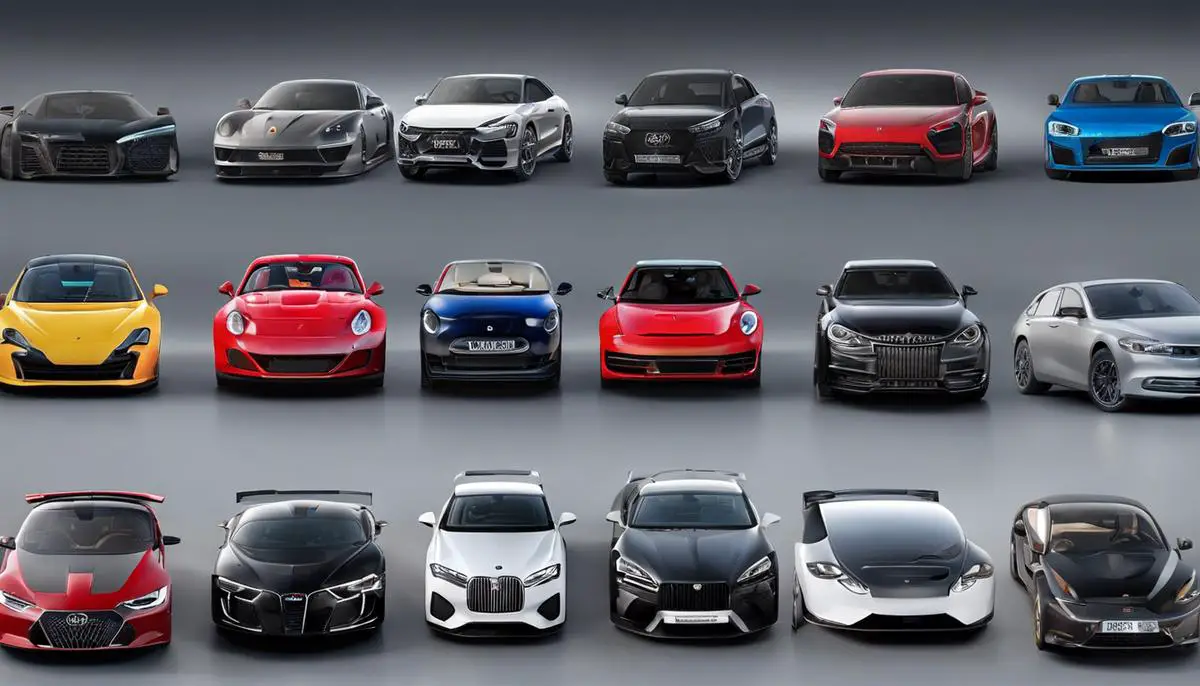
Future Trends in 3D High-Resolution Image Synthesis
One of the future developments we can anticipate in the field of 3D image synthesis involves the further integration of AI and machine learning techniques. Although AI plays an increasingly significant role in 3D modelling as seen in neural network models and machine learning applications, there is still much untapped potential. For instance, future AI technologies could generate lifelike human faces or intricate architectural structures surprisingly rapidly and with precise detail.
Furthermore, the advancement of volumetric rendering processes, which depict physical space as a set of volume elements or voxels to create volumetric 3D objects, signals the shift towards a more immersive, dynamic visualization. Future developments might witness voxel-based rendering capture the nuances that convey realistic fluid motion, smoke, or even clouds, contributing to more convincing, high-quality graphics.
Simultaneously, established techniques such as ray tracing and light field rendering continue to evolve, promising more realistic lighting arrangements in generated images. The increased refinement of these complex techniques will render more believable and photorealistically valid visual experiences. We will see lighting scenarios, including reflection, refraction, or even caustics, being rendered with captivating precision.
Undoubtedly, augmented reality (AR) and virtual reality (VR) technologies will play a crucial role in the future of high-resolution 3D image synthesis. As VR and AR continue to expand their user base, the demand for more sophisticated, circumstantially aware rendering technologies will rise. Real-time rendering, once a purely academic pursuit, will become the norm, delivering immediate, highly responsive, immersive experiences.
Beyond entertainment, anticipations for 3D image synthesis encompass numerous practical applications, particularly in visualizing complex data in various fields. For example, in healthcare, high-resolution 3D synthesis could revolutionize medical imaging, enabling the creation of realistic, interactive models for surgical planning or physician training. Industrial manufacturing could utilize 3D rendering to produce virtual prototypes, reducing the cost and time for product development.
Meanwhile, in geosciences, as also in space exploration, synthesized 3D images could help interpret vast, intricate data sets. Such visually informative representations could offer powerful tools in understanding seismic activity or mapping alien topographies in unexplored planets. Similarly, in forensic investigations, 3D high-resolution imaging might recreate crime scenes or provide visual evidence, and in film and advertising, it might generate stunning visual effects that captivate audiences worldwide.
Therefore, while the future is difficult to predict with certainty, these anticipated developments point towards a vibrant, transformative potential in high-resolution 3D image synthesis — an opportunity promised by continuous evolution and advancement. It stands as an exciting time for those passionate about this technology, allowing us to look upon future developments with a stimulating sense of wonder and curiosity.
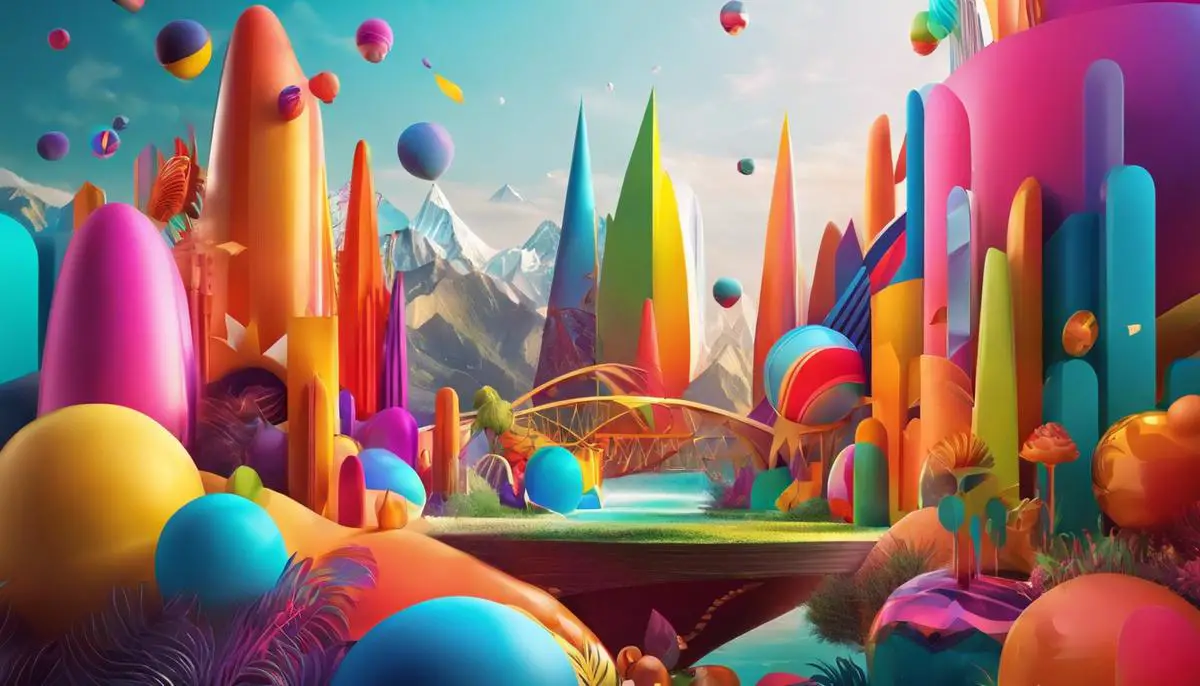
The landscape of 3D high-resolution image synthesis is ever-changing, fueled by the relentless pursuit of presenting reality with unprecedented accuracy and attention to detail. The techniques are becoming more sophisticated, and the applications more diverse, as they continue to revolutionize industries from gaming to architecture to scientific simulations. While challenges arise from various aspects such as computational complexity, accuracy, and memory requirements, solutions are being explored to overcome these hurdles. As we venture onwards, the potential advancements in hardware, software, and rendering techniques offer exciting prospects that promise to push the visualization capabilities to new heights, heralding a transformative era in 3D high-resolution image synthesis.

Emad Morpheus is a tech enthusiast with a unique flair for AI and art. Backed by a Computer Science background, he dove into the captivating world of AI-driven image generation five years ago. Since then, he has been honing his skills and sharing his insights on AI art creation through his blog posts. Outside his tech-art sphere, Emad enjoys photography, hiking, and piano.
